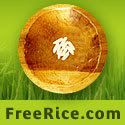about a week ago i arrived at my new apartment - and it is awesome! It's about twice the size of my old one and the windows actually let natural light in! amazing!
as i was packing and unpacking i was analyzing all the stuff i have and... i have a lot of stuff. not only that, but i have a lot of stuff i don't even use! I kept extra blankets in the winter in case people wanted to crash at my house, i save my plastic bags (in hopes that i'll never take another one again from the market, but that collection somehow keeps growing), and i have a ton of stuff that i need to get rid of. i've noticed that the products in korean stores are packaged to protect them in case of nuclear attacks (not seriously- i just mean there's a lot of plastic). if i were to buy some sushi at homeplus (the tesco owned mega store), it would have an outside layer, individually wrapped sushi pieces, and the plastic from the sauce packets and garnishings; most of the product's weight isn't edible. all this said, i've also been reading the no impact man blog and discovered a list of things that would greatly cut down on the waste that we produce. for those who've read that blog in the past are probably familiar with some stuff on this list, but for those who haven't... check it out. apparently the average american produces 4.5 pounds of trash per day. if even a few of these tips are taken to heart i think this average would drop immensely.
- No soda in cans (which means we’re probably less likely to get cancer from aspartame).
- No water in plastic bottles (which means we get to keep our endocrines undisrupted).
- No coffee in disposable cups (which means we don’t suffer from the morning sluggishness that comes from overnight caffeine withdrawal).
- No throwaway plastic razors and blade cartridges (I’m staging the straightedge razor comeback).
- Using non-disposable feminine-hygiene products that aren’t bad for women and are good for the planet.
- No Indian food in throwaway takeout tubs.
- No Italian food in plastic throwaway tubs.
- No Chinese food in plastic throwaway tubs.
- Taking our own reusable containers to takeout joints (except that now we’re eating local so this tip is out for us).
- Admitting that we sometimes miss Indian, Italian and Chinese takeout.
- Hopping on the scale and celebrating the loss of my 20-pound spare tire since I stopped eating bucketsful of Indian, Italian and Chinese takeout.
- Buying milk in returnable, reusable glass bottles.
- Shopping for honey and pickled veggies and other goods in jars only from merchants who will take back the jars and reuse them.
- Returning egg and berry cartons to the vendors at the farmers’ market for reuse.
- Using neither paper nor plastic bags and bringing our own reusable bags when grocery shopping.
- Canceling our magazine and newspaper subscriptions and reading online.
- Putting an end to the junk mail tree killing.
- Carrying my ultra-cool reusable cup and water bottle (which is a glass jar I diverted from the landfill and got for free).
- Carrying reusable cloths for everything from blowing my nose to drying my hands to wrapping up a purchased bagel.
- Wiping my hands on my pants instead of using a paper towel when I forget my cloth.
- Politely asking restaurant servers to take away paper and plastic napkins, placemats, straws, cups and single-serving containers.
- Explaining to servers with a big smile that I am on a make-no-garbage kick.
- Leaving servers a big tip for dealing with my obsessive-compulsive, make-no-garbage nonsense, since they can’t take the big smile to the bank.
- Pretending McDonalds and Burger King and all their paper and plastic wrappers just don’t exist.
- Buying no candy bars, gum, lollypops or ice cream (not even Ben and Jerry’s peanut butter cup) that is individually packaged.
- Making my own household cleaners to avoid all the throwaway plastic bottles.
- Using baking soda from a recyclable container to brush my teeth.
- Using baking soda for a deodorant to avoid the plastic containers that deodorant typically comes in (cheap and works well).
- Using baking soda for shampoo to avoid plastic shampoo bottles.
- Using the plastic bags that other people’s newspapers are delivered in to pick up Frankie the dog’s poop.
- Keeping a worm bin to compost our food scraps into nourishment that can be returned to the earth instead of toxins that seep from the landfills.
- Switching to real—meaning cloth—diapers which Isabella, before she was potty-trained, liked much better.
- Not buying anything disposable.
- Not buying anything in packaging (and count the money we save because that means pretty much buy nothing unless it’s second hand).
- Shopping for food only from the bulk bins and from the local farmer’s market where food is unpackaged and fresh.
- Forgetting about prepackaged, processed food of any description.
- Being happy that the result is that we get to eat food instead of chemicals.
- Giving our second-hand clothes away to Housing Works or other charities.
- Offering products we no longer need on Freecycle instead of throwing them away.
- Collecting used paper from other people's trash and using the other side.
- Using old clothes for rags around the apartment instead of paper towels.
- Talking with humor about what we’re doing because making a little less trash is a concrete first step everyone can take that leads to more and more environmental consciousness.

